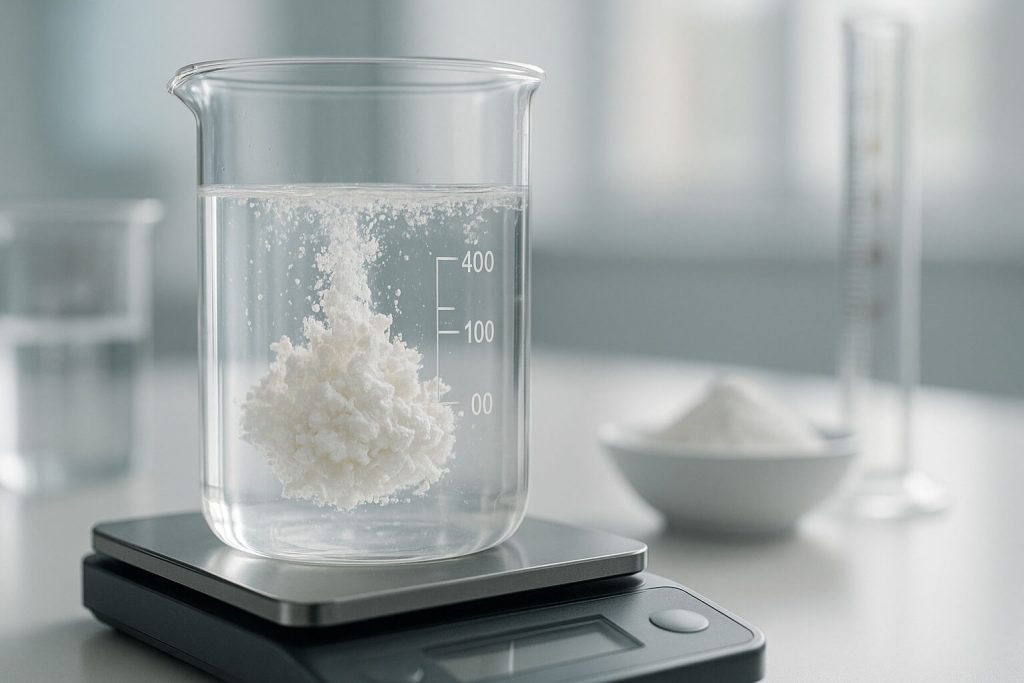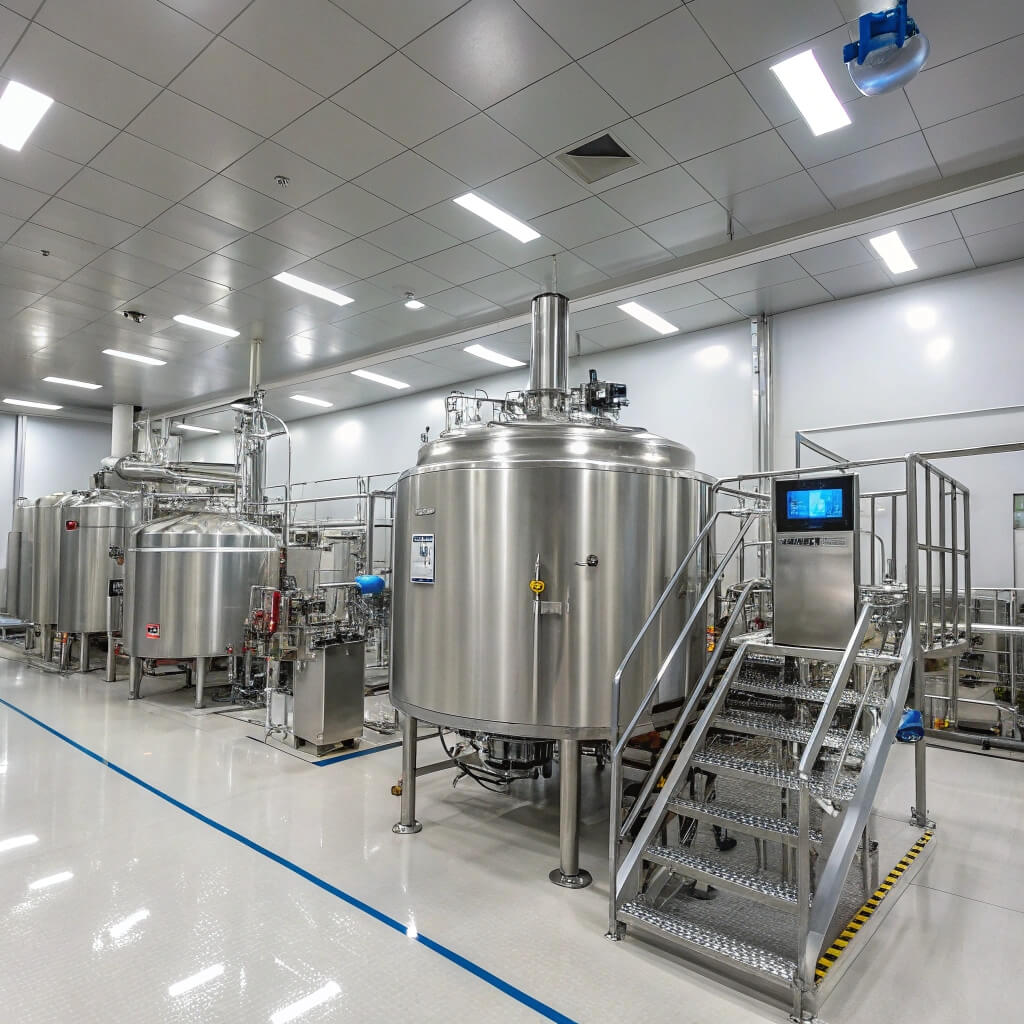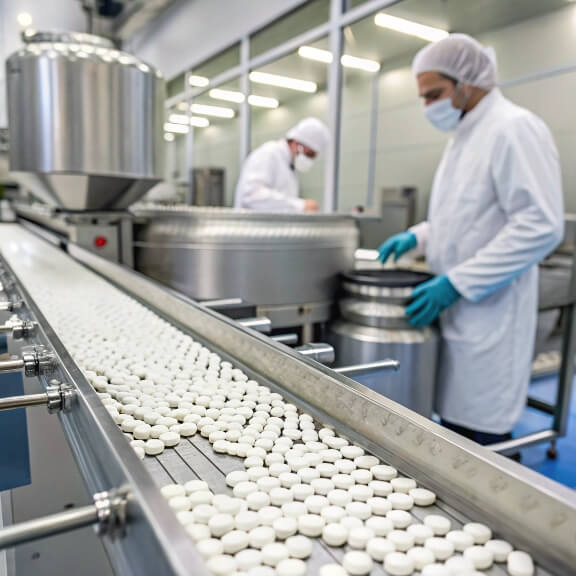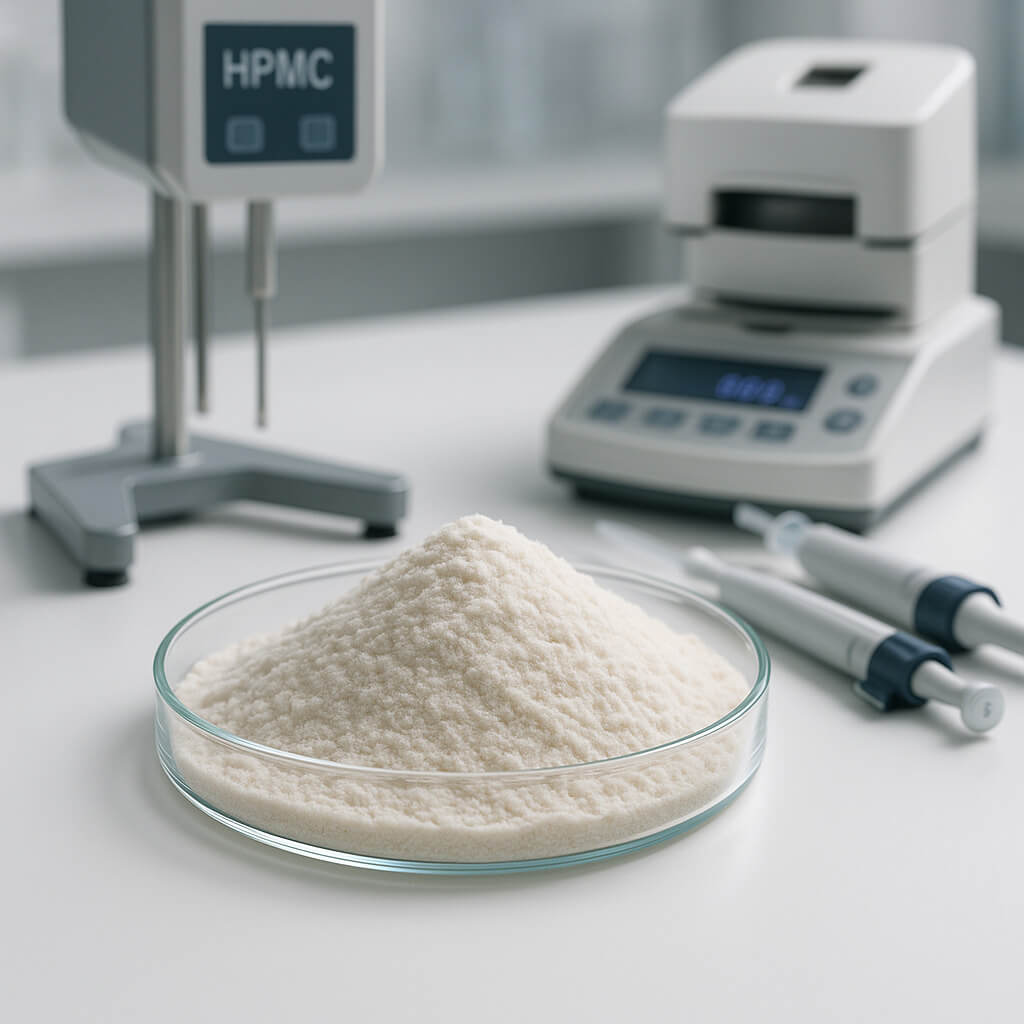Selecting the right Hydroxypropyl Methylcellulose (HPMC) grade is crucial for manufacturing success across pharmaceutical, construction, and food industries. The diverse range of HPMC grades available today presents both opportunities and challenges for purchasing managers and technical decision-makers. Each grade offers specific performance characteristics that directly impact product quality, processing efficiency, and cost-effectiveness. This article provides a comprehensive analysis of HPMC grades and their applications, helping you identify the optimal match for your specific manufacturing requirements. By understanding the nuanced differences between grades, you can make informed decisions that enhance product performance while optimizing your production processes.

1. What Is HPMC and Why Is It Important in Manufacturing?
Hydroxypropyl Methylcellulose (HPMC) is a semi-synthetic, non-ionic cellulose ether derived from natural cellulose through chemical modification. This versatile polymer consists of cellulose backbones with methoxyl and hydroxypropyl substituent groups, which determine its key properties and applications. HPMC first emerged in the 1960s and has since become an indispensable ingredient across multiple industries due to its exceptional functionality.
وهذا ما يجعلها مميزة: HPMC possesses remarkable binding, thickening, film-forming, and water-retention capabilities that few other additives can match. These properties have positioned it as a critical component in countless manufacturing processes worldwide.
The importance of HPMC in modern manufacturing cannot be overstated. In construction, it serves as a crucial rheology modifier in mortars and renders. Pharmaceutical manufacturers rely on it for controlled drug release and tablet coating. Food producers utilize it as a stabilizer and thickener. This widespread adoption stems from HPMC’s unique combination of properties: it’s non-toxic, biodegradable, and offers excellent stability across varying pH levels and temperatures.
HPMC grades are typically classified based on several key parameters:
| معلمة التصنيف | وصف | أهمية الصناعة |
|---|---|---|
| اللزوجة | Measured in mPa·s or cP | Primary differentiator across all applications |
| محتوى الميثوكسيل | عادةً 19-30% | Affects solubility and thermal gelation |
| محتوى هيدروكسي بروبيل | Typically 4-12% | Influences surface activity and hydration |
| حجم الجسيمات | Standard or fine powder | Impacts dissolution rate and dispersion |
2. How Are Different HPMC Grades Classified and Categorized?
HPMC grades follow a systematic classification approach that helps manufacturers identify the most suitable option for their specific applications. The primary classification system revolves around viscosity, which directly impacts flow behavior, binding strength, and film-forming capabilities.
You need to know this: Viscosity-based classification divides HPMC into three main categories: low (5-75 mPa·s), medium (100-4,000 mPa·s), and high (4,000-100,000 mPa·s). These measurements are typically taken at 2% concentration in water at 20°C, providing a standardized comparison across different grades.
Beyond viscosity, the substitution pattern—specifically the methoxyl and hydroxypropyl content—creates further differentiation between grades. These chemical modifications determine critical properties like solubility temperature, surface activity, and thermal gelation point.
| نوع الاستبدال | محتوى الميثوكسيل (%) | محتوى هيدروكسي بروبيل (%) | Key Properties |
|---|---|---|---|
| E-Type | 28-30 | 7-12 | Higher thermal gelation, excellent film formation |
| F-Type | 27-30 | 4-7.5 | Good organic solubility, moderate water retention |
| K-Type | 19-24 | 7-12 | Superior water retention, lower thermal gelation |
Industry-specific grading standards add another layer of classification. Pharmaceutical grades must comply with pharmacopeia specifications (USP, EP, JP), which mandate strict purity levels and substitution patterns. Construction grades focus on water retention and workability parameters, while food grades must meet FDA and other regulatory requirements for food additives.
The nomenclature for HPMC grades often follows a pattern that indicates both the substitution type and viscosity. For example, “HPMC K4M” indicates a K-type substitution with 4,000 mPa·s viscosity. This standardized naming convention helps technical buyers quickly identify suitable grades for their applications.
3. What Are the Primary Applications for Low-Viscosity HPMC Grades?
Low-viscosity HPMC grades (5-75 mPa·s) offer unique advantages in applications where minimal thickening but excellent binding and film-forming properties are required. These grades provide efficient performance at lower concentrations, making them cost-effective for many manufacturing processes.
Why this matters: Low-viscosity grades dissolve more rapidly and create solutions with lower resistance to flow, making them ideal for spray applications, thin coatings, and processes where easy pumping and transfer are essential.
In the construction industry, low-viscosity HPMC grades serve as critical components in tile adhesives, self-leveling compounds, and gypsum-based products. They provide the perfect balance of water retention and workability without excessive thickening that could impede application. Typical dosage ranges from 0.1% to 0.3% by weight, delivering significant performance improvements even at these low concentrations.
| طلب البناء | HPMC Grade (Viscosity) | Typical Dosage (%) | الفوائد الرئيسية |
|---|---|---|---|
| مواد لاصقة للبلاط | 15-40 mPa·s | 0.15-0.25 | Extended open time, improved slip resistance |
| مركبات التسوية الذاتية | 5-15 mPa·s | 0.05-0.15 | Enhanced flow, reduced air entrainment |
| Gypsum Plasters | 25-50 mPa·s | 0.1-0.2 | Better workability, reduced water demand |
The pharmaceutical industry utilizes low-viscosity HPMC extensively in tablet coating and as a binder in direct compression formulations. These grades create thin, uniform films that protect active ingredients while ensuring consistent dissolution profiles. In tablet binding applications, they provide sufficient cohesion without impeding disintegration.
Food manufacturers value low-viscosity HPMC for its excellent emulsion stabilization and film-forming capabilities. It serves as an effective gluten replacer in gluten-free bakery products and provides oil barrier properties in fried foods, reducing oil absorption by up to 40%.
4. How Do Medium-Viscosity HPMC Grades Perform in Various Industries?
Medium-viscosity HPMC grades (100-4,000 mPa·s) represent the most versatile and widely used category, striking an optimal balance between thickening power and processability. These grades deliver substantial viscosity enhancement while maintaining good flow characteristics at working concentrations.
The key advantage here: Medium-viscosity grades provide excellent water retention, binding strength, and film formation while still allowing for efficient processing in conventional manufacturing equipment.
In pharmaceutical applications, medium-viscosity HPMC grades serve as the backbone of controlled-release matrix systems. They create a hydrophilic matrix that gradually swells upon contact with biological fluids, controlling drug release over extended periods. This technology has revolutionized medication adherence by reducing dosing frequency from 3-4 times daily to once daily for many treatments.
| التطبيقات الصيدلانية | HPMC Grade (Viscosity) | الملف الشخصي للإصدار | Clinical Advantage |
|---|---|---|---|
| أقراص ممتدة المفعول | 4,000 mPa·s | 12-24 hours | انخفاض وتيرة الجرعات، وتحسين الالتزام |
| Controlled-Release Capsules | 1,500-4,000 mPa·s | 8-12 ساعة | Minimized side effects, stable blood levels |
| Gastro-Resistant Coatings | 100-400 mPa·s | pH-dependent | Targeted intestinal delivery |
The construction industry relies heavily on medium-viscosity HPMC for cement-based mortars, renders, and plasters. These grades provide the ideal water retention to prevent premature drying while maintaining workability for proper application. The result is improved adhesion, reduced cracking, and enhanced durability of the final construction material.
In food applications, medium-viscosity HPMC grades create specific texture profiles that enhance mouthfeel and stability. They serve as critical ingredients in low-fat dairy products, providing the creamy texture consumers expect despite reduced fat content. In bakery applications, these grades improve dough handling, increase volume, and extend shelf life by maintaining moisture.
5. Which High-Viscosity HPMC Grades Deliver Superior Results?
High-viscosity HPMC grades (4,000-100,000 mPa·s) represent the premium segment of the market, delivering maximum thickening power, exceptional water retention, and superior binding strength. These grades create robust structures in formulations, making them indispensable for demanding applications across multiple industries.
What you’ll find impressive: High-viscosity grades can transform product performance at extremely low concentrations, often requiring just 0.5-1.0% to achieve dramatic improvements in stability, strength, and durability.
In advanced pharmaceutical formulations, high-viscosity HPMC grades serve as the gold standard for extended-release matrix systems designed to provide 24-hour drug release profiles. These grades create a more robust gel layer that resists erosion, allowing for once-daily dosing of medications that would otherwise require multiple daily doses.
| التطبيقات الصيدلانية | HPMC Grade (Viscosity) | Clinical Outcome | فائدة المريض |
|---|---|---|---|
| Once-Daily ER Tablets | 15,000-100,000 mPa·s | 24-hour sustained release | Simplified regimen, improved adherence |
| Abuse-Deterrent Formulations | >50,000 mPa·s | Tamper-resistant matrices | Reduced potential for misuse |
| Floating Drug Delivery Systems | 15,000-30,000 mPa·s | Gastric retention >12 hours | Site-specific drug delivery |
Specialty construction applications benefit tremendously from high-viscosity HPMC grades. In high-performance tile adhesives designed for large-format tiles and challenging substrates, these grades provide exceptional slip resistance and extended open time. In exterior insulation and finish systems (EIFS), they enhance adhesion and weather resistance, extending the service life of the building envelope.
6. What Factors Should Guide Your HPMC Grade Selection Process?
Selecting the optimal HPMC grade requires a systematic approach that considers multiple factors beyond basic viscosity specifications. A comprehensive selection process ensures that the chosen grade delivers the required performance while optimizing cost-effectiveness and processing efficiency.
This is critical: The most expensive manufacturing mistakes often stem from selecting an HPMC grade based solely on viscosity without considering the full spectrum of application requirements and processing conditions.
Application-specific requirements should be your starting point for grade selection. Each industry has unique performance criteria that must be satisfied:
| صناعة | Critical Requirements | Recommended Grade Characteristics |
|---|---|---|
| الصيدلة | Dissolution profile, content uniformity | Specific substitution type, precise viscosity control |
| بناء | Water retention, workability, open time | K-type substitution, appropriate viscosity range |
| طعام | Texture, stability, mouthfeel | Food-grade certification, consistent batch-to-batch quality |
Processing conditions significantly impact HPMC performance and must be carefully considered during grade selection. Temperature, shear forces, pH, and ionic environment can all affect how HPMC behaves during manufacturing.
Remember this principle: A higher-priced HPMC grade that allows for lower dosage, faster processing, or improved end-product performance often delivers better overall value than a cheaper alternative with inferior characteristics.
Testing protocols for grade verification should be established to confirm that the selected HPMC grade meets your specific requirements. Standard tests include viscosity measurement, substitution analysis, particle size distribution, and application-specific performance testing.
7. How Can You Optimize HPMC Performance Through Proper Handling?
Even the most carefully selected HPMC grade can underperform if not properly handled during storage, preparation, and incorporation into formulations. Optimizing HPMC performance requires attention to several critical handling factors that significantly impact its functionality.
Here’s a professional insight: Most HPMC-related manufacturing issues stem not from the grade selection but from improper handling techniques that prevent the polymer from fully developing its intended properties.
Storage and handling best practices begin with proper warehouse conditions. HPMC is hygroscopic and can absorb moisture from the environment, potentially affecting its dispersion properties and shelf stability. Maintaining temperature between 15-30°C and relative humidity below 65% is essential for preserving HPMC quality during storage.
Dispersion and hydration techniques significantly impact HPMC performance in the final application. Proper dispersion prevents the formation of agglomerates (“fish eyes”) that can be difficult to dissolve and may create quality issues in the finished product. The hot/cold technique—dispersing HPMC in hot water above 80°C before cooling—is particularly effective for preventing lumps and ensuring complete hydration.
The optimization of HPMC performance often requires collaboration between material suppliers, process engineers, and quality control personnel. Establishing clear protocols for handling, incorporating, and evaluating HPMC in your specific applications will ensure consistent results and maximize the value derived from this versatile polymer.
خاتمة
Selecting and optimizing the right HPMC grade for your manufacturing needs represents a critical decision that impacts product performance, processing efficiency, and ultimately, market success. The diverse range of HPMC grades available today offers unprecedented opportunities to fine-tune formulations for specific applications across pharmaceutical, construction, food, and other industries.
By understanding the classification systems, application-specific requirements, and handling best practices outlined in this article, purchasing managers and technical decision-makers can make informed choices that deliver superior results. Remember that viscosity is just one parameter among many that determine HPMC performance—substitution type, particle size, and regulatory compliance are equally important considerations for most applications.
For optimal results, we recommend working closely with HPMC suppliers who offer technical support and application expertise. Their insights can help navigate the complexities of grade selection and optimization, potentially saving significant time and resources during product development and scale-up.
قسم الأسئلة الشائعة
Q1: What is the difference between HPMC and other cellulose derivatives?
HPMC differs from other cellulose derivatives primarily in its substitution pattern and resulting properties. Unlike Methylcellulose (MC), HPMC contains both methoxyl and hydroxypropyl groups, providing better solubility in cold water and unique thermal gelation properties. Compared to Carboxymethylcellulose (CMC), HPMC is non-ionic and maintains consistent viscosity across a wide pH range (3-11), while CMC is anionic and sensitive to pH and electrolytes. These differences make HPMC particularly valuable in applications requiring pH stability, thermal responsiveness, and excellent water retention.
Q2: Can different HPMC grades be blended for custom applications?
Yes, different HPMC grades can be blended to achieve customized performance profiles that may not be available from standard grades. Blending low and high viscosity grades can create intermediate viscosities with unique flow properties. Similarly, mixing different substitution types (e.g., E-type and K-type) can produce hybrid performance characteristics. However, blending should be approached systematically with thorough testing, as the resulting properties may not be strictly linear combinations of the individual grades.
Q3: How does temperature affect HPMC performance across different grades?
Temperature significantly impacts HPMC performance, with effects varying by grade and substitution type. All HPMC grades exhibit reverse thermal gelation, forming gels when heated above their specific gel temperature (typically 65-90°C depending on grade). E-type grades generally have lower gel temperatures than K-type grades. At temperatures below gelation, viscosity decreases as temperature increases, following an Arrhenius relationship. This temperature sensitivity affects processing conditions and application performance.
Q4: What are the sustainability aspects of different HPMC grades?
HPMC offers several sustainability advantages regardless of grade. As a cellulose derivative, it comes from renewable wood pulp sources, with many suppliers now offering grades derived from sustainably managed forests with FSC or PEFC certification. HPMC is biodegradable, though degradation rates vary by substitution type and viscosity. Higher viscosity grades typically degrade more slowly due to their larger molecular size. Many manufacturers now offer eco-friendly grades with reduced environmental impact through improved production processes and responsible sourcing practices.
Q5: How do I determine the exact HPMC grade specifications for my application?
Determining the exact HPMC grade specifications requires a systematic approach combining theoretical knowledge with practical testing. Start by identifying critical performance requirements for your application (e.g., viscosity, water retention, gel strength). Next, consult with HPMC suppliers to identify candidate grades that potentially meet these requirements. Then conduct laboratory-scale tests comparing these candidates in your actual formulation under realistic processing conditions. This methodical approach minimizes risk and ensures optimal grade selection for your specific application.




